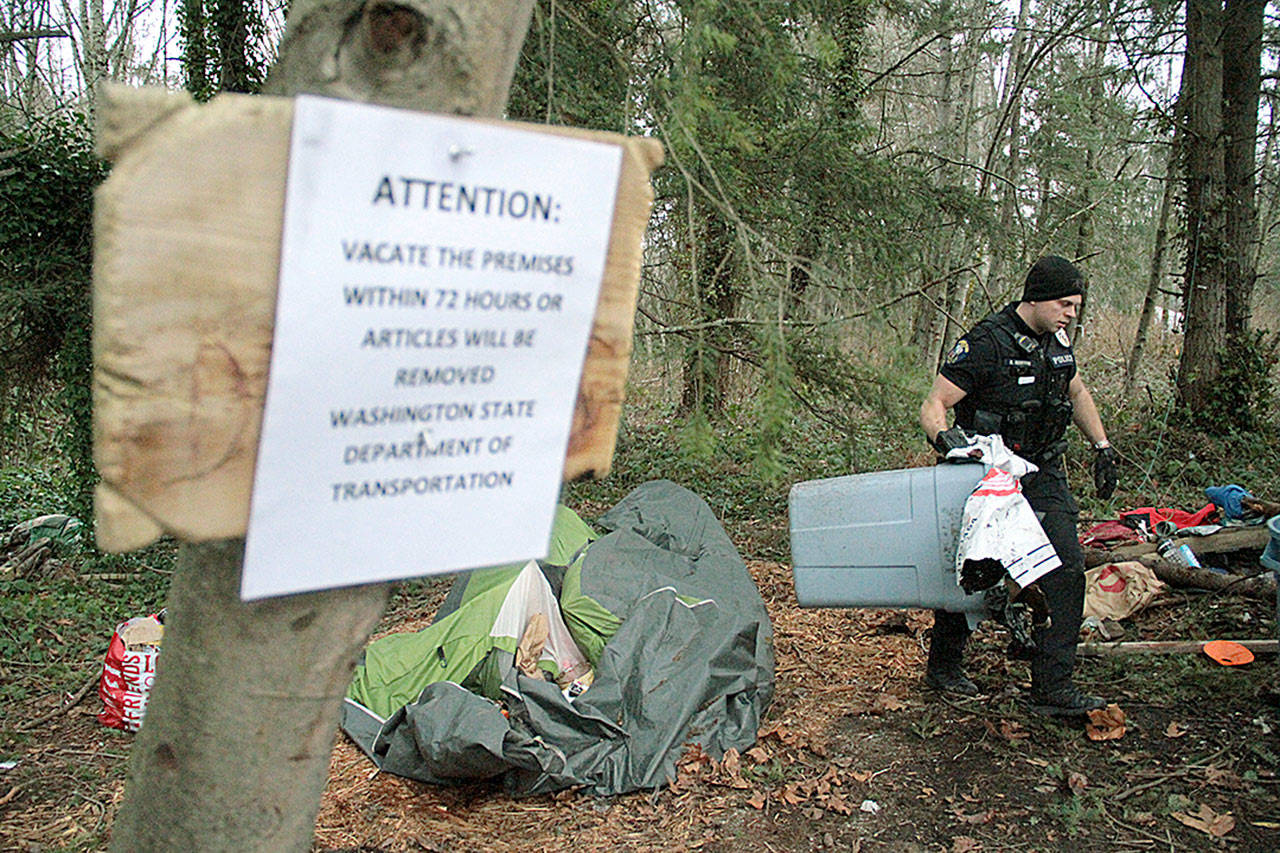More than 450 people in Kitsap County are homeless and about 170 of them are living in places not meant for human habitation, according to Kitsap County’s annual January 2019 Point-In-Time Count survey, released earlier this month.
Preliminary results show a 17 percent increase in “unsheltered homelessness” from 2018, officials noted, and a 5 percent increase above the average of the last three years.
“The increase in this year’s Point-In-Time Count shows we have a lot of work to do to identify the underlying causes of homelessness and through our community partnerships and coalitions, move swiftly to implement solutions,” said Commissioner Ed Wolfe, chair of the Kitsap County Board of Commissioners.
“From exploring options for more affordable housing, to our Homes for All group that is building a tiny house village to provide temporary accommodations, we’re committed to addressing the circumstances that prevent all citizens from having safe, decent, affordable housing,” he said.
The spike in unsheltered homelessness includes those living on the streets, and in vehicles, abandoned buildings and the woods.
This year’s count also reflects an overall 6 percent increase over 2018 of those who are homeless living in emergency and transitional shelters.
Surveys were collected throughout the county during a 24-hour period at the end of January. During that time, 487 individuals were living homeless in various situations, with 174 living in places not meant for human habitation.
The survey showed 158 people living in emergency shelters (including two overnight shelters), and 155 housed in subsidized transitional housing units. Many additional individuals and households are “doubled up” or “couch surfing” — living temporarily with family and friends — which makes it extremely difficult to get an accurate count of this demographic, officials said, though every year efforts are made to improve the surveying process.
In 2019, more than 120 citizen volunteers donated over 450 hours, helping with outreach surveying.
“It’s exciting to see so many community members stepping up to volunteer for this project. Clearly there is a lot of community awareness of homelessness and a strong desire to help,” said Kirsten Jewell, Housing and Homelessness Division Coordinator for Kitsap County Human Services.
In addition to surveying at food banks and community meal sites, volunteers paired with experienced outreach workers to survey encampments, parking lots, and people living on the street.
This year, Kitsap County did a small pilot program to recruit and work with people who have experienced homelessness to gain their expertise in order to improve the Point-In-Time Count.
“We are confident this year’s survey results are more accurate,” Jewell said. “We do know there are other people that either we don’t find, or who don’t want to be found. We recognize these results do not include everyone experiencing homelessness.”
A significant factor in the number of unsheltered versus sheltered people over the last few years is the addition of overnight shelter beds hosted by the Salvation Army, serving more than 60 people per night.
The Salvation Army Winter Shelter is slated to close until next winter on Sunday, March 31.
The Kitsap Rescue Mission also provides beds for more than 20 people per night.



